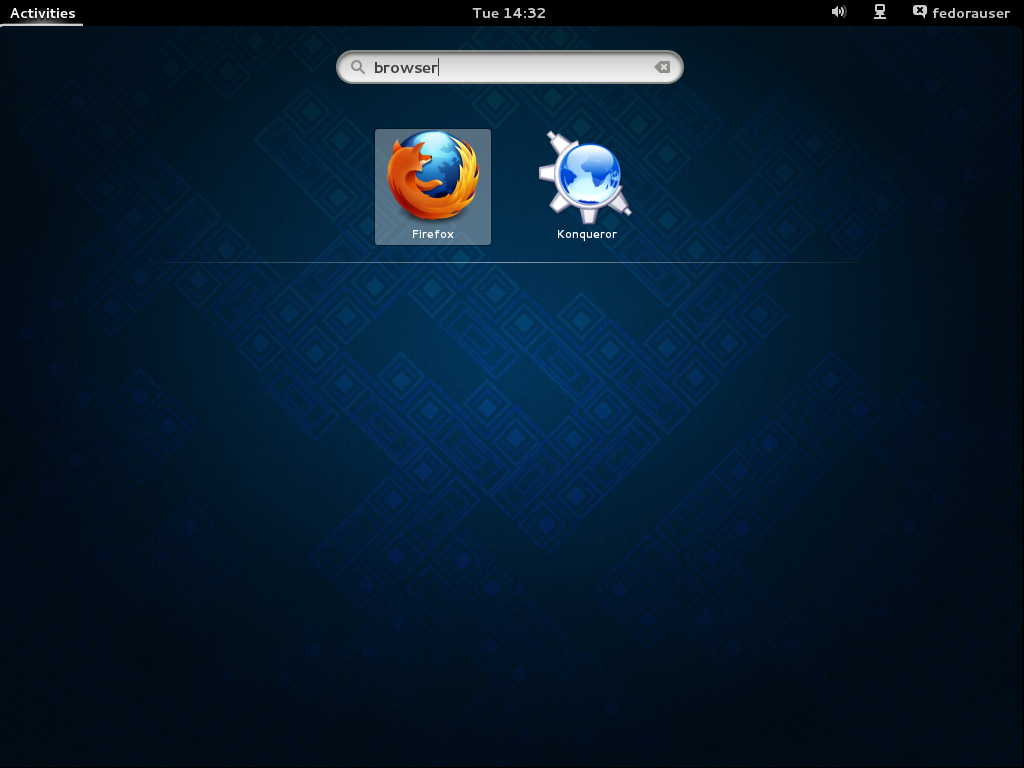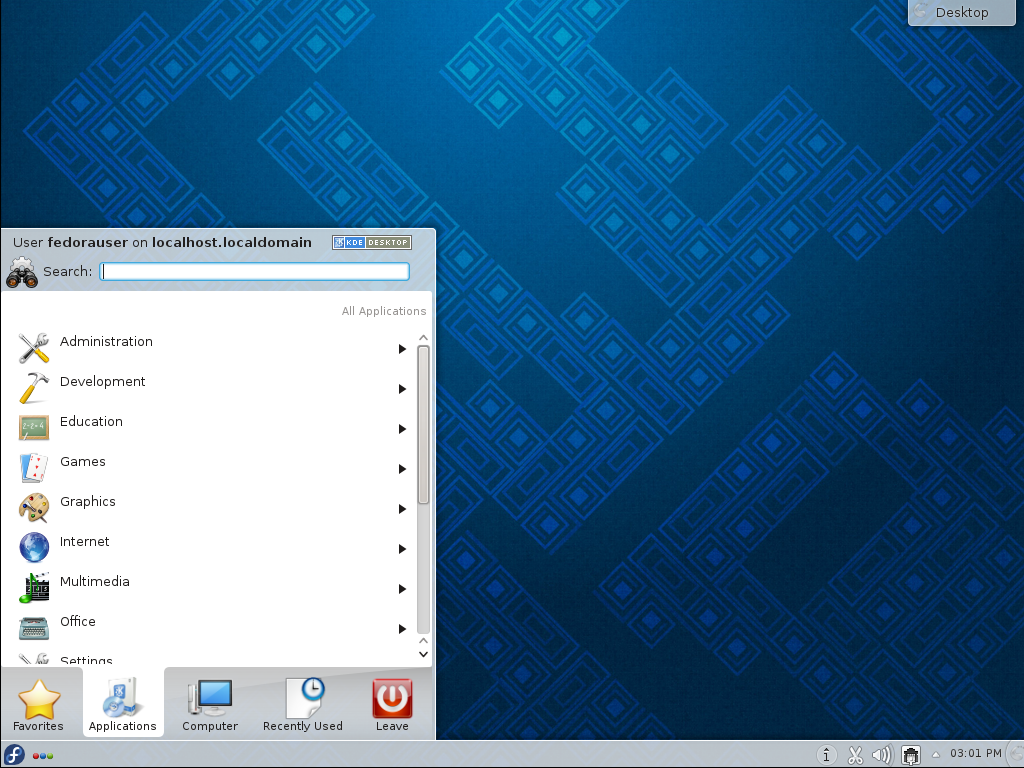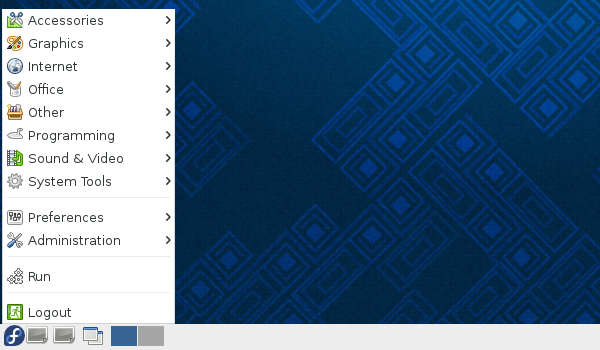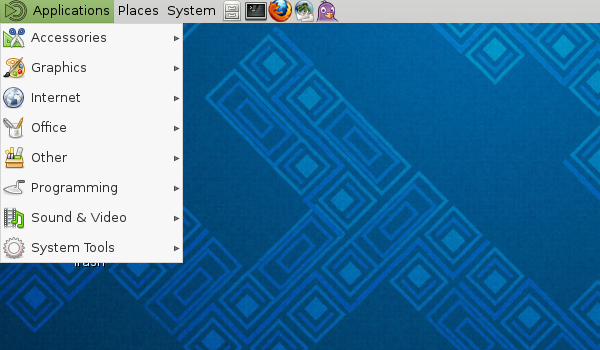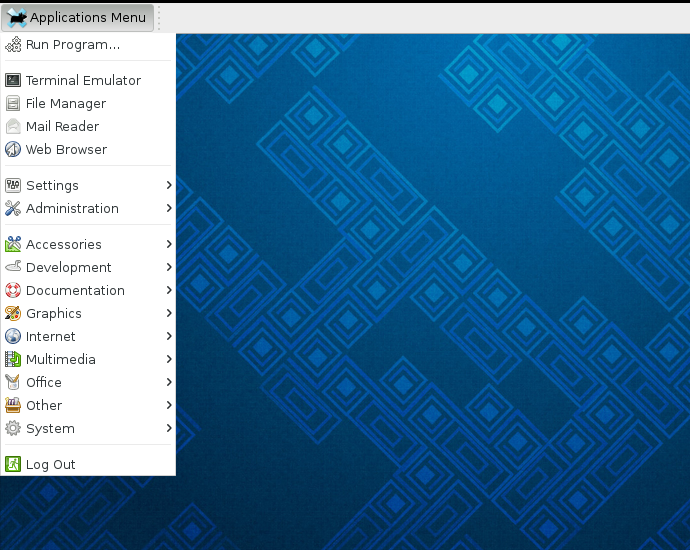그래픽 응용프로그램 열기
페도라는 많은 기능을 구성하기 위해 명령 줄 유틸리티뿐만 아니라 그래픽 응용프로그램을 제공합니다. 이 장은 다양한 환경에서 그래픽 사용자 연결장치, 또는 GUI, 응용프로그램 열기를 위한 방법을 설명합니다.
명령줄에서 그래픽 응용프로그램 열기
그래픽 응용프로그램은 응용프로그램의 이름을 단순한 입력하여 터미널 윈도우 또는 콘솔 세션에서 실행 할 수 있습니다.
[fedorauser@localhost]$ firefox
|
파일 이름대 응용프로그램 이름
프로그램은 프로그램 꾸러미에서 제공된 실행 할 수 있는 파일의 이름을 사용하여 명령 줄에서 열립니다. 데스크탑 메뉴에 있는 항목은 종종 이를 실행하는 파일에서 다른 이름으로 지정 되어질 수 있습니다. 예를 들면, 그놈 데스크탑 관리 유틸리티는 Disks 와 같은 메뉴에서 나타나고, 이를 실행하는 파일은 `/usr/bin/gnome-disks`입니다. |
프로그램은 명령 줄에서 실행 될 때에, 터미널은 프로그램이 완료 될 때까지 복사됩니다. 그래픽 응용프로그램은 명령 줄에서 실행 될 때에, 프로그램 오류 출력, 또는 STDERR, 터미널 창으로 전송됩니다. 이는 문재 해결 할 때에 특별히 유용 할 수 있습니다.
[fedorauser@localhost]$ astromenace-wrapper AstroMenace 1.3.1 121212 XML 파일을 엽니다: /home/fedorauser/.config/astromenace/amconfig.xml VFS 파일이 열렸습니다 /usr/share/astromenace/gamedata.vfs 제조사 : OpenAL Community 이미지 합성 : OpenAL Soft 버전 : 1.1 ALSOFT 1.15.1 ALut 버전 : 1.1 글꼴 초기화됨: DATA/FONT/LiberationMono-Bold.ttf 현재 비디오 방식: 3200x1080 32비트 Xinerama/TwinView 감지됨. 화면 수: 2 화면 #0: (0, 0) x (1920, 1080) 화면 #1: (1920, 0) x (1280, 1024) 지원 해상도 목록: 640x480 16비트 640x480 32비트 640x480 0비트 768x480 16비트 <잘린 출력>
그래픽 응용프로그램을 시작하려면, 추가 출력을 백그라운드로 포크하고 즉시 사용을 위해 터미널을 반환하고, 쉘의 `작업 제어 ` 기능을 사용합니다.
[fedorauser@localhost]$ emacs foo.txt &
|
세션 끝내기
Applications that hold the command line prompt until they complete will close when the terminal session ends, even if they are forked into the background. |
GUI programs can also be launched on one TTY and displayed on another by specifying the DISPLAY variable. This can be useful when running multiple graphical sessions, or for troubleshooting problems with a desktop session.
-
Switch to another TTY using the key combination Ctrl+Alt+F2 and log in. Note that consoles are available by default with F2 through F6.
-
Identify the X session you want to target. The
DISPLAYvariable is always an integer preceded by a colon, and will be :0 in most cases. Check the arguments of the currently running X process to verify the value. The command below shows both theDISPLAYvariable as well as the TTY that X is running on,tty1.[fedorauser@localhost]$ ps aux|grep /usr/bin/X root 1498 7.1 1.0 521396 353984
tty1Ss+ 00:04 66:34 /usr/bin/X:0vt1 -background none -nolisten tcp -auth /var/run/kdm/A:0-22Degc root 23874 0.0 0.0 109184 900 pts/21 S+ 15:35 0:00 grep --color=auto /usr/bin/X -
Specify the
DISPLAYvariable when executing the program.[fedorauser@localhost]$ DISPLAY=:0 gnome-shell --replace & -
Switch back to the TTY the graphical session is running on. Since the example above shows X running on
vt1, pressing Ctrl+Alt+F1 will return to the desktop environment.
Launching Applications with Alt+F2
Most desktop environments follow the convention of using the key combination Alt+F2 for opening new applications. Pressing Alt+F2 brings up a prompt for a command to be entered into.
Commands entered into this dialog box function much as they would if entered in a terminal. Applications are known by their file name, and can accept arguments.
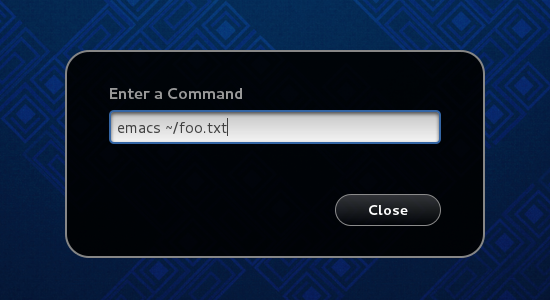
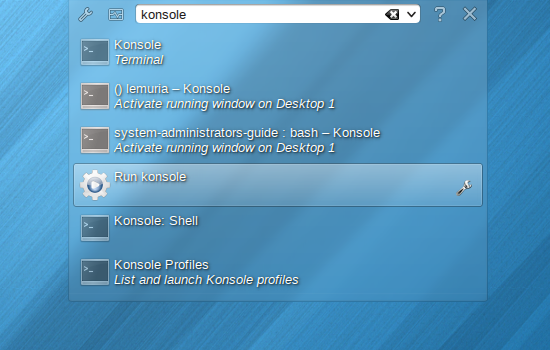
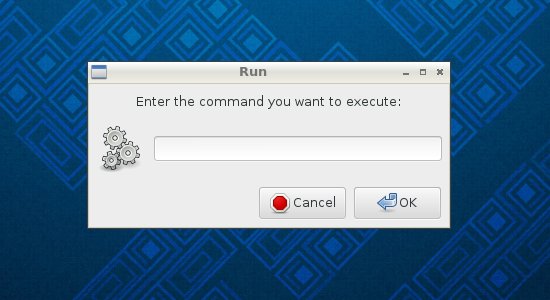
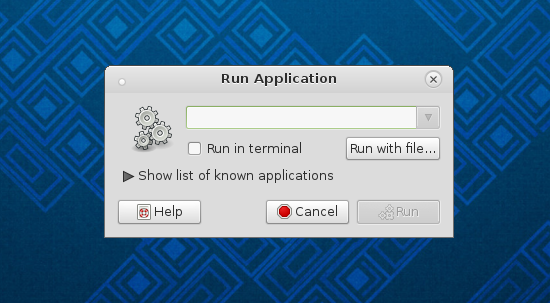
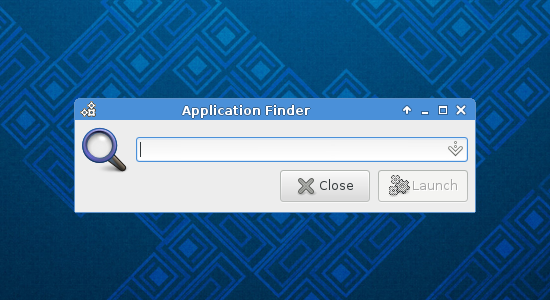
Launching applications from the Desktop Menu
Applications can also be opened from the menu system provided by the desktop environment in use. While the presentation may vary between desktop environments, the menu entries and their categories are provided by the individual application and standardized by the freedesktop.org Desktop Menu Specification. Some desktop environments also provide search functionality in their menu system to allow quick and easy access to applications.
Using GNOME menus
The GNOME menu, called the overview, can be accessed by either clicking the Activities button in the top left of the primary display, by moving the mouse past the top left hot corner, or by pressing the Super ( Windows ) key. The overview presents documents in addition to applications.
Selecting an item from the menu is best accomplished using the search box. Simply bring up the overview, and begin typing the name of the application you want to launch. Pressing enter will launch the highlighted application, or you can use the arrow keys or mouse to choose an alternative.
The overview can also be browsed. The bar on the left, called the dash, shows frequently used applications and a grid icon. Clicking on the grid icon brings up a grid in the center of the window that displays frequently used applications. The grid will display all available applications if selected using the All button at the bottom of the screen.
To learn more about using GNOME shell, visit https://wiki.gnome.org/GnomeShell/CheatSheet
Using KDE menus
The KDE menu is opened by clicking the Fedora button at the bottom left corner of the screen. The menu initially displays favorite applications, which can be added to by right clicking any menu entry. Hovering over the icons in the lower portion of the menu will display applications, file systems, recently used applications, or options for logging out of the system.
Search functionality is also available in the KDE menu system. To search for applications, open the menu and begin typing. The menu will display matching entries.
Want to help? Learn how to contribute to Fedora Docs ›
